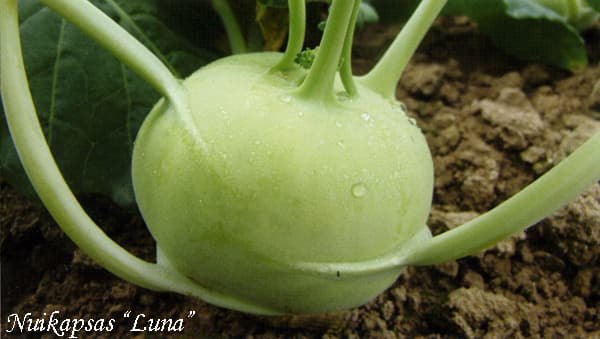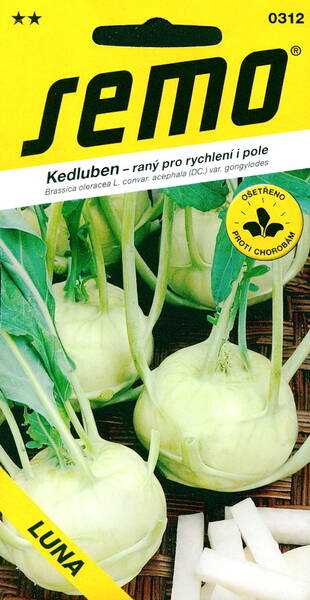Ex Tax: 1.14€
Nutrient champion among cabbages.
Very early variety. Very resistant to stalking, fibrous stems and cracking.
Sowing time: April.
Planting seedlings: May.
Harvest: June, July.
Planting methods: sowing in open ground or through seedlings.
Distance between plants: 15 cm.
Distance between rows: 30 cm.

Kohlrabi cabbage - Brassica oleracea var. gongylodes.
Has a beneficial effect on the nervous system, liver, and gall bladder.
Biennial vegetable plant of the cruciferous family. Unlike white cabbage, it does not form a head of cabbage, but is grown for the sake of the spherical thickening of the stem. This is the earliest cabbage vegetable. Grown by seedlings and without seedlings.
The agricultural technology of cultivation is similar to that of white cabbage. Unlike other types of cabbage, seedlings are planted shallowly, covering only the root system with soil (deep planting results in elongated stems). Planting pattern: 25 cm x 25 cm.
Watering and fertilizing are carried out at the beginning of the formation of the stem crop.
Kohlrabi is harvested when the stem fruits reach 8-12 cm in diameter (overripe, they become rough and fibrous). Store at a temperature of 0° C, humidity 95% for 1.5-2 months.
The stem fruits of kohlrabi are juicy, firm in consistency, from light green to dark purple in color (depending on the variety). The nutritional, dietary value and pleasant taste of the plant are explained by the high sugar content, large amounts of mineral salts - potassium, calcium, magnesium, phosphorus, as well as vitamins (niacin, riboflamin, thiamine). In terms of vitamin C content, kohlrabi is not inferior to lemons and oranges. Eating kohlrabi has a beneficial effect on the nervous system, metabolism, and the functioning of the digestive organs, especially the liver and gall bladder.















